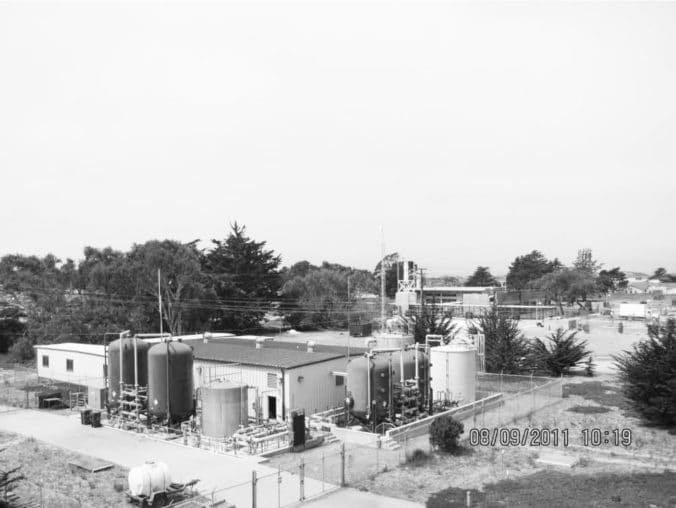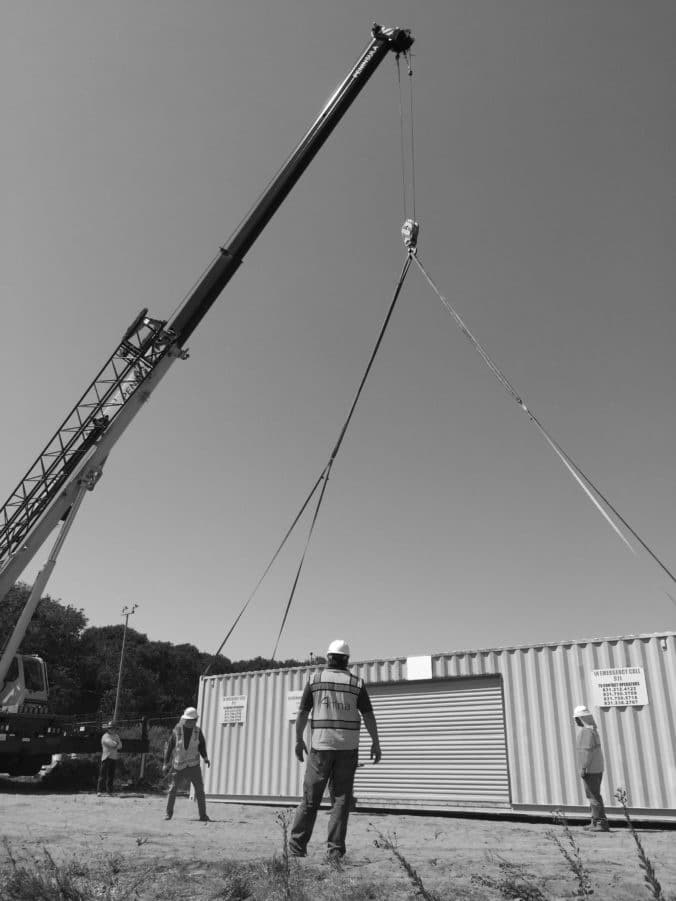
On about 28,000 acres of scenic coastal Central California, the site of former Fort Ord is tucked between the beachside cities of Marina, Seaside, Sand City and Monterey and the farmland of Salinas. It was arguably one of the most beautiful places to go through boot camp in the United States—and thousands did, between 1947 and 1975.
The Fort was established in 1917 as Camp Gigling, a military training base for infantry troops. It went on to become a permanent Army command installation, providing command, administration and logistical support for the Fort and its nearby sub-installations.
But a new day has come, and the former Fort Ord has been on a path to be turned over to community use. Military use of the property mostly ceased in 1994 with the post closure, and since then much of the property has been repurposed for residential, commercial, educational, and recreational use.
Transferring ownership can be difficult when the land is a Superfund site—a place where hazardous waste was dumped or otherwise improperly managed. Fort Ord has several instances of hazardous waste mismanagement in its history. Contaminants at Fort Ord reside both in the soil and the groundwater, and another portion of the property contains a high density of ordnance and explosives, such as rockets, projectiles, rifle and hand grenades, pyrotechnics, demolition materials, and more.
Site transfer documentation includes certain restrictions: don’t install a well; don’t use groundwater for drinking water; and warnings that munitions may still be present on site. Drinking water is brought to the site from outside the potentially affected areas.
Ahtna Environmental, Inc. and its sister companies, Ahtna Engineering Services, LLC and Ahtna Global, LLC, have collectively worked at the site for more than 20 years and took part in the cleanup. Ahtna started out operating groundwater treatment systems to clean up detected volatile organic compounds (VOCs) and was tasked with operating and maintaining unengineered landfills on the site. The list of chemicals to be treated included trichloroethylene, carbon tetrachloride and many other known contaminants.
“The landfills at Fort Ord, some of which date back to the 1950s, were simply holes dug in the ground where trash was dumped, not like the landfills of today that include liners and engineered cover systems,” said Derek Lieberman, senior program manager for Ahtna. Lieberman has been working on site reclamation at Fort Ord for nearly 30 years.
“Contamination in that trash migrated down into the groundwater. That’s what triggered the U.S. Environmental Protection Agency (EPA) to add Fort Ord to the National Priorities List. Most contaminants are from used solvents: degreasers and things used for cleaning metal parts and equipment,” he said.
In a firefighter training area at the former Fort Ord, waste oil and off-specification jet fuel was dumped into an unlined pit, lit on fire and firefighters practiced putting the fire out, often using aqueous film-forming foam (AFFF), a fire suppressant used to extinguish fires from flammable liquids. The chemicals that make up AFFF—known as per- and polyfluoroalkyl substances (PFAS)—are potentially harmful to humans and the surrounding environment. While recognized as a potential contaminant, federal standards still require the foam to be used at airports and military installations.
Ahtna was tasked in 2019 with doing a limited investigation for PFAS that may have originated from the Fort Ord landfills. PFAS were found and documented, and the Army began a more rigorous investigation per the Superfund process, which Ahtna has played an active role in.
“We’ve been putting in monitoring wells and collecting soil samples and those are being analyzed for PFAS. We’ll make recommendations to the Army as to what to do next. It’s still very much in process,” Lieberman said.
Cleaning Toxic Water

When contaminants are found in a groundwater system, the process of cleaning the aquifer is slow and methodical. It’s a job Ahtna has been doing at Fort Ord since the early 2000s. Treatment involves extracting groundwater—there are 31 extraction wells throughout Fort Ord—and running the extracted water through carbon filtration systems. They’re similar to household water treatment filters found on grocery store shelves but on a much larger scale, using between 10,000 and 120,000 pounds of activated carbon at each groundwater treatment facility. The treated water is reinjected to recharge the aquifers, and contaminant levels are tested quarterly at nearly 150 wells around the site. A significant program upgrade about 15 years ago resulted in treatment systems that can be fully monitored from a single location with two full-time operators.
The groundwater treatment program has shown marked success. The former firefighter training area is considered fully treated for VOCs. Two other sites, home to former automotive and other equipment repair facilities, are nearing completion. Some sites, such as the landfill area, will continue to be monitored and treated for at least another 15 years.
Other contaminants take more work to treat. A carbon tetrachloride plume that formed below an area where communication equipment was frequently cleaned between 1940 and 1950 contaminated three aquifers. Cleanup in this area was three-pronged: remove contaminated soil vapor; pump and treat groundwater; and add enhanced in-situ bioremediation, where a compound is injected that feeds naturally occurring microbes in the groundwater, stimulating growth and “appetite”. The compound is then removed, so the hungry microbes turn to the carbon tetrachloride as a food source.
Lieberman said the injected compound – sodium lactate – is similar to sour milk and would not be very appetizing to people, but is an excellent energy source for the microbes. It wasn’t easy; the substance is very viscous and required workers to frequently pull the injection equipment apart and clean it out. But it was effective.
PFAS Treatment Requires Rigor
With success treating VOCs in groundwater, Ahtna is supporting the Army’s efforts to test for PFAS at the site. Because screening levels for PFAS contamination are so low, Lieberman said testing teams must be exceptionally rigorous about not bringing in contaminants. For example, a stray fiber from a fleece jacket, molecules from makeup worn at the site, or even boots treated with waterproofing chemicals such as Gore-Tex could be enough to register contamination.
“It’s a group of emerging contaminants and it’s extremely challenging because the concentrations that we’re looking at having potential negative health impacts are very, very, very low, and PFAS are used in many different products,” Lieberman said. “It takes a single molecule coming off them to cross-contaminate a sample and get a positive hit.”
A New Life for Fort Ord
While testing goes on, new uses have begun. In April 2020, the EPA recognized the former Fort Ord Army Base with a National Federal Facility Excellence in Site Reuse award, citing innovative thinking and cooperation among federal agencies, states, tribes, local partners and developers that has resulted in marked restoration and reuse of the site.
“For the past three years, we’ve shown how federal facility Superfund sites can be transformed into community assets,” said EPA Administrator Andrew Wheeler at an April 2020 recognition event. “I’m proud of the work to address and redevelop these sites.”
“This national recognition is thanks to many professionals who have worked tirelessly to ensure the cleanup protects human health and the environment and supports the reuse identified by the local communities,” said Bill Collins, Fort Ord Base Realignment and Closure Environmental Coordinator for the U.S. Army.
EPA Regional Administrator John Busterud said the cleanup effort allowed community use to begin earlier than expected.
“We are pleased to recognize the dynamic cooperation among the U.S. Army and local partners to clean up this federal facility and return it to productive use,” Busterud said. “This is a unique Superfund cleanup in that the Army early-on in the process transferred approximately 3,340 acres of the former base to the Fort Ord Reuse Authority (FORA) to complete the cleanup on behalf of the Army.”
The site is now home to a variety of users. California State University operates its Monterey Bay campus there, and many enjoy the trails at the Fort Ord National Monument and Fort Ord Dunes State Park. It’s also home to the California Central Coast Veterans Cemetery, a developing retail center, residential developments, and a Veterans Administration outpatient clinic.
“The progress at Fort Ord has allowed new institutions and community benefitting assets to take shape and set the stage for a bright future on the Monterey Bay,” said FORA Executive Officer Josh Metz.
